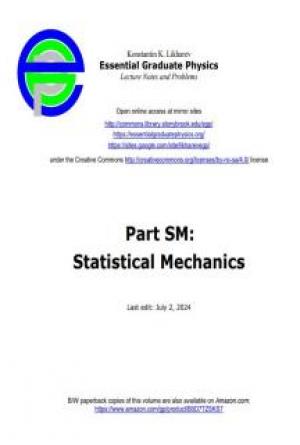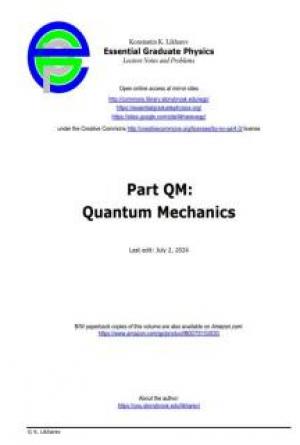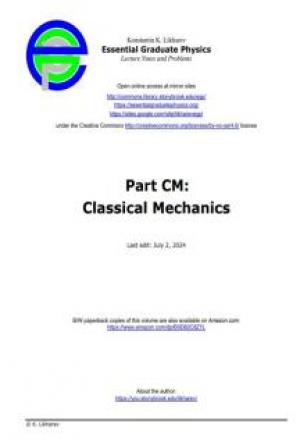Chapter 36 Heat: Phase Changes
how much heat must flow into the liquid water to warm it up to the boiling point, 100 °
C.
Q = mc
∆T ′
3
liquid water
where ∆T ′
°
°
°
= (100 C – 0 C) = 100 C.
After Q + Q + Q flows into the H
°C. Next, we have to find
1
2
3
2O, we have liquid water at 100
how much heat must flow into the liquid water at 100 °
°
C to convert it to steam at 100 C.
Q = m L
4
v
After Q + Q + Q + Q flows into the H
°C. Now, all we
1
2
3
4
20, we have water vapor (gas) at 100
need to do is to find out how much heat must flow into the water gas at 100 °
C to warm it up to
128 °
C.
Q = mc
∆T ′′
5
steam
where ∆T ′′
°
°
°
= 128 C − 100 C = 28 C.
So the amount of heat that must flow into the sample of solid ice at –9.0 °
C in order for sample to
become steam at 128 °
C (the answer to the question) is:
Q
+ Q + Q + Q + Q
total = Q1
2
3
4
5
2
65
Chapter 37 The First Law of Thermodynamics
37 The First Law of Thermodynamics
We use the symbol U to represent internal energy. That is the same symbol that
we used to represent the mechanical potential energy of an object. Do not
confuse the two different quantities with each other. In problems, questions, and
discussion, the context will tell you whether the U represents internal energy or it
represents mechanical potential energy.
We end this physics textbook as we began the physics part of it (Chapter 1 was a mathematics
review), with a discussion of conservation of energy. Back in Chapter 2, the focus was on the
conservation of mechanical energy; here we focus our attention on thermal energy.
In the case of a deformable system, it is possible to do some net work on the system without
1
1
causing its mechanical kinetic energy
2
2
v
m
+
Iw to change (where m is the mass of the
2
2
system, v
is the speed of the center of mass of the system, I is the moment of inertia of the
system, and w is the magnitude of the angular velocity of the system). Examples of such work
would be: the bending of a coat hanger, the stretching of a rubber band, the squeezing of a lump
of clay, the compression of a gas, and the stirring of a fluid.
When you do work on something, you transfer energy to that something. For instance, consider
a case in which you push on a cart that is initially at rest. Within your body, you convert
chemical potential energy into mechanical energy, which, by pushing the cart, you give to the
cart. After you have been pushing on it for a while, the cart is moving, meaning that it has some
kinetic energy. So, in the end, the cart has some kinetic energy that was originally chemical
potential energy stored in you. Energy has been transferred from you to the cart.
In the case of the cart, what happens to the energy that you transfer to the cart is clear. But how
about the case of a deformable system whose center of mass stays put? When you do work on
such a system, you transfer energy to that system. So what happens to the energy?
Experimentally, we find that the energy becomes part of the internal energy of the system. The
internal energy of the system increases by an amount that is equal to the work done on the
system.
This increase in the internal energy can be an increase in the internal potential energy, an
increase in the internal kinetic energy, or both. An increase in the internal kinetic energy would
manifest itself as an increase in temperature.
Doing work on a system represents the second way, which we have considered, of causing an
increase in the internal energy of the system. The other way was for heat to flow into the system.
The fact that doing work on a system and/or having heat flow into that system will increase the
internal energy of that system, is represented, in equation form, by:
∆U = Q +WIN
2
66
Chapter 37 The First Law of Thermodynamics
which we copy here for your convenience:
∆U = Q + WIN
(37-1)
In this equation, ∆U is the change in the internal energy of the system, Q is the amount of heat
that flows into the system, and WIN is the amount of work that is done on the system. This
equation is referred to as the First Law of Thermodynamics. Chemists typically write it without
the subscript IN on the symbol W representing the work done on the system. (The subscript
IN is
there to remind us that the WIN represents a transfer of energy into the system. In the chemistry
convention, it is understood that W represents the work done on the system—no subscript is
necessary.)
Historically, physicists and engineers have studied and developed thermodynamics with the goal
of building a better heat engine, a device, such as a steam engine, designed to produce work from
heat. That is, a device for which heat goes in and work comes out. It is probably for this reason
that physicists and engineers almost always write the first law as:
∆U = Q − W
(37-2)
where the symbol W represents the amount of work done by the system on the external world.
(This is just the opposite of the chemistry convention.) Because this is a physics course, this
(∆U = Q − W ) is the form in which the first law appears on your formula sheet. I suggest
making the first law as explicit as possible by writing it as ∆U = Q IN − WOUT or, better yet:
∆U = Q IN + WIN
(37-3)
In this form, the equation is saying that you can increase the internal energy of a system by
causing heat to flow into that system and/or by doing work on that system. Note that any one of
the quantities in the equation can be negative. A negative value of Q IN means that heat actually
flows out of the system. A negative value of WIN means that work is actually done by the system
on the surroundings. Finally, a negative value of ∆U means that the internal energy of the
system decreases.
Again, the real tip here is to use subscripts and common sense. Write the First Law of
Thermodynamics in a manner consistent with the facts that heat or work into a system will
increase the internal energy of the system, and heat or work out of the system will decrease the
internal energy of the system.
2
67







